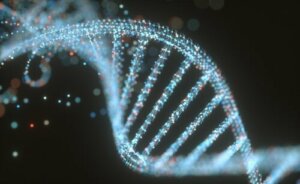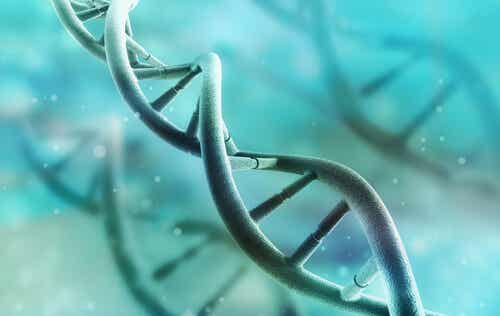The Differences Between DNA and RNA


Written and verified by the doctor Leonardo Biolatto
DNA and RNA are basic molecules for life as we know it. They comprise our genetic material and allow the storage of information from all cell structures and functions.
Viruses also use these molecules to store genetic information though. However, they’re different from human cells and each one of them can have one of the two molecules or both. That is, they can have DNA and RNA or only one of the two.
Both DNA and RNA are essential and similar as far as our cells are concerned. However, there are many differences and that’s precisely the subject of this article. Continue reading to learn more about cellular functioning.
The differences between DNA and RNA
DNA and RNA are nucleic acids. DNA is the abbreviation for deoxyribonucleic acid, while RNA is the abbreviation for ribonucleic acid. These molecules enable cellular functioning as they act as a kind of instruction manual for the cells.
DNA contains genetic information and resides in the nucleus of cells and, to a lesser extent, in another part of the cell called the mitochondrion. In turn, it’s composed of other simpler structures: nitrogenous bases.
The combination of these bases is what makes DNA a source of information, and is different in every organism. In other words, it’s what determines our genetic code and makes us different from one another.
In contrast, RNA is responsible for protein synthesis. While DNA is in charge of all the genetic information, the function of RNA is to have it processed by the cells so they can fulfill their functions.

What are the differences between DNA and RNA?
It’s necessary to know their structure to understand the differences between both molecules:
- DNA is made up of two different chains that form a linear double helix. These same chains coil and group together to form the chromosomes, which are in the nucleus of the cell.
- RNA is a linear molecule consisting of a single strand.
The double helix of DNA forms when the nitrogenous bases of the two strands blend together; this doesn’t happen in RNA. The difference between the chains of both is the types of bases that form them. The base in DNA is thymine, and uracil is the base for RNA. Likewise, the sugar that composes them also varies in the structure of both.
Another difference is that DNA weighs more. This is also due to the fact that it’s usually a more complex and larger molecule.
The location of both molecules is different. DNA is either in the nucleus or the mitochondria. However, RNA is present in other parts of the cell – in the ribosomes, for example.
In addition, RNA has different subtypes according to its function. There’s messenger RNA, transfer RNA, and ribosomal RNA. Each of them plays an important role in protein synthesis.
Find out What’s Precision Medicine

Check out this article and Discover How DNA Works
To remember
The explanation of DNA and RNA is complex but the important thing to know is they’re structurally and functionally different. Both molecules are necessary for cellular functioning. The most remarkable thing at a structural level is that DNA is double-stranded and RNA is single-stranded.
In short, one can say that DNA contains genetic information and RNA is responsible for ‘reading’ this information and transforming it into proteins at the functional level. These proteins are necessary for the cell to function.
All cited sources were thoroughly reviewed by our team to ensure their quality, reliability, currency, and validity. The bibliography of this article was considered reliable and of academic or scientific accuracy.
- Significado de ADN y ARN (Qué son, Concepto y Definición) – Significados. (n.d.). Retrieved April 7, 2020, from https://www.significados.com/adn-y-arn/
- Diferencias entre ADN y ARN. (n.d.). Retrieved April 7, 2020, from https://psicologiaymente.com/salud/diferencias-adn-arn
- Los ácidos nucleicos. (n.d.). Retrieved April 7, 2020, from http://profesores.elo.utfsm.cl/~tarredondo/info/soft-comp/Bio-Intro/diferencias.htm
- ADN y ARN concepto, diferencias y funciones | VIU. (n.d.). Retrieved April 7, 2020, from https://www.universidadviu.es/adn-arn/
This text is provided for informational purposes only and does not replace consultation with a professional. If in doubt, consult your specialist.








